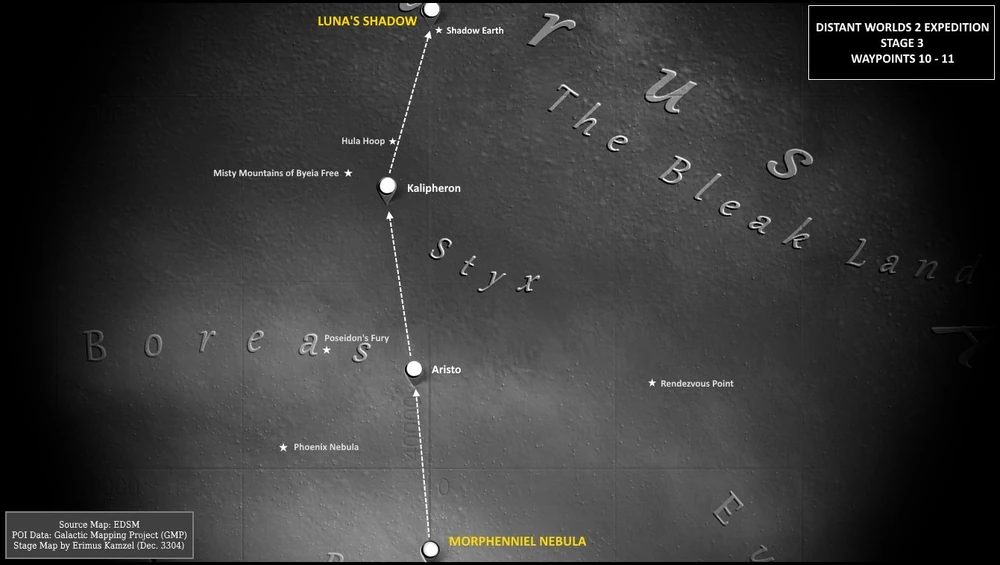
Byua Aub WO-K b36-0 (4,859.34LY)
Kalipheron
Situated at the extreme southern edge of the Galactic Aphelion and bordering the Boreas Expanse, this system is home to a moon that is geologically active with Ammonia Magma – one of the rarest forms of geological phenomena so far discovered.
Ammonia Magma vents can be located on Planet 3, Moon A.
Pru Aub DL-P e5-35 (4,942.84LY)
Aristo
Quadruple white-star solar system in the heart of the Boreas Expanse. The system contains a variety of high-metal content worlds, brightly illuminated ring systems, and several moons, many of which are landable. Most of the landable planets are high-g.
Mapping surveys have revealed both biological and geological activity on several of the Aristo worlds.
Waypoint 10: Bleethuae NI-B d674 (4,898.94LY)
Original meetup date: 5/4/3305
Meetup location: 2 D A
Morphenniel Nebula
Situated just 1,000 LYs from the off-limits Bleia Nebula, Morphenniel is the closest visitable nebula to this mysterious sector of space.
This nebula has a bright orange-white tip that falls away to darker orange and red colours, which from some angles resembles the tail-fire of a rocket, hence the name.
It is fairly small, being about 40 x 30 x 30 LY but occupies an interesting location. It is located 670 LYs below the Galactic Plane and 2000 LYs from the Magnus Nebula visited by the Distant Worlds Expedition (Waypoint 17).
It has few hot stars, most being cooler K and M types – the system closest to the centre is a Y dwarf circled by icy worlds devoid of any atmosphere but illuminated by the deep red colours of the nebula itself.
The nebula reference star system has a small biologically and geologically active Trojan Moon (Planet/Moon : 2 D A) with striking surface features, one being a double impact crater shrouded in a thin haze and surrounded by large mountain ranges.
